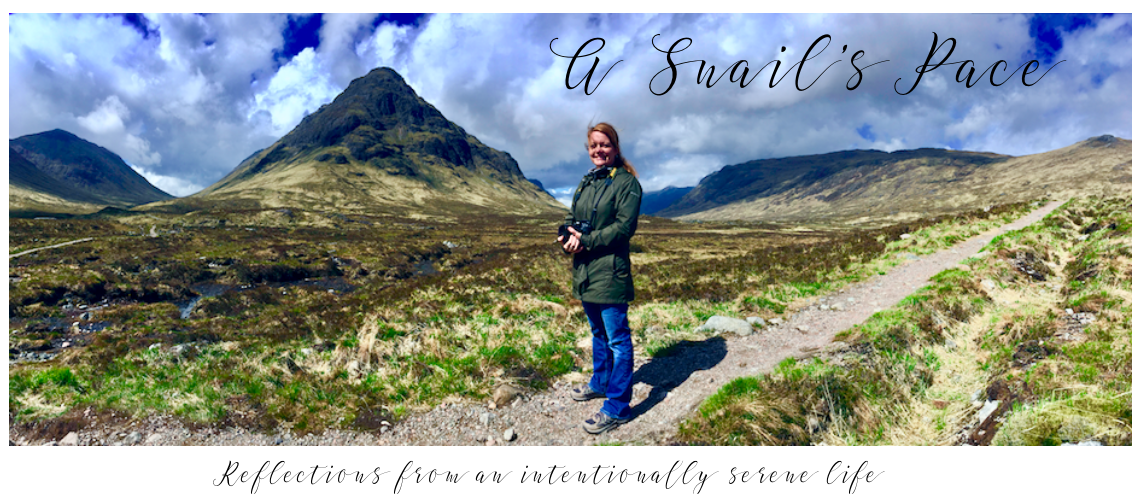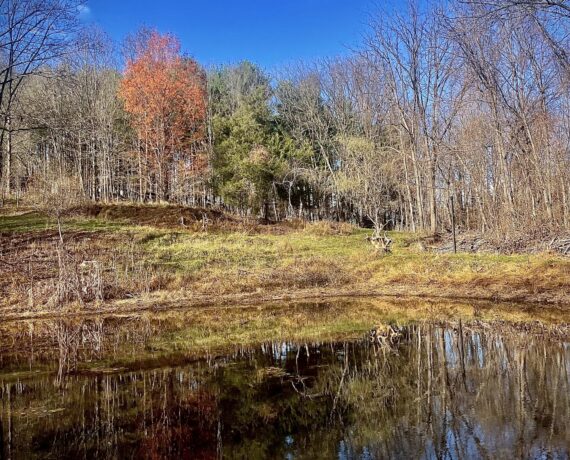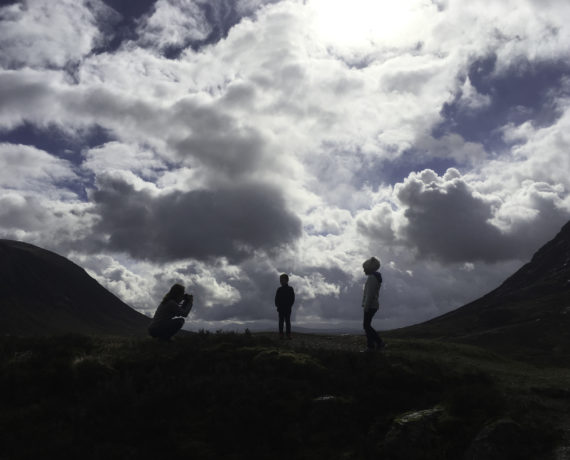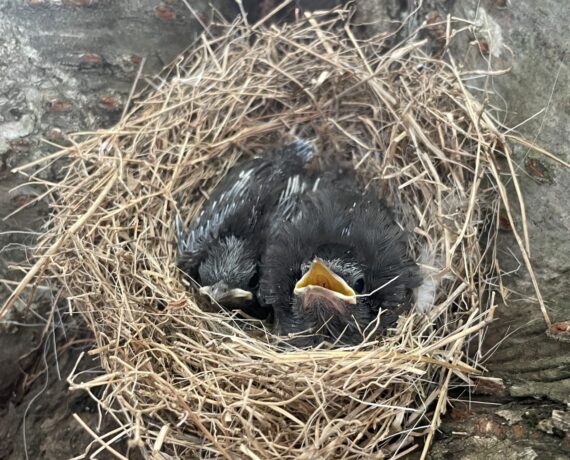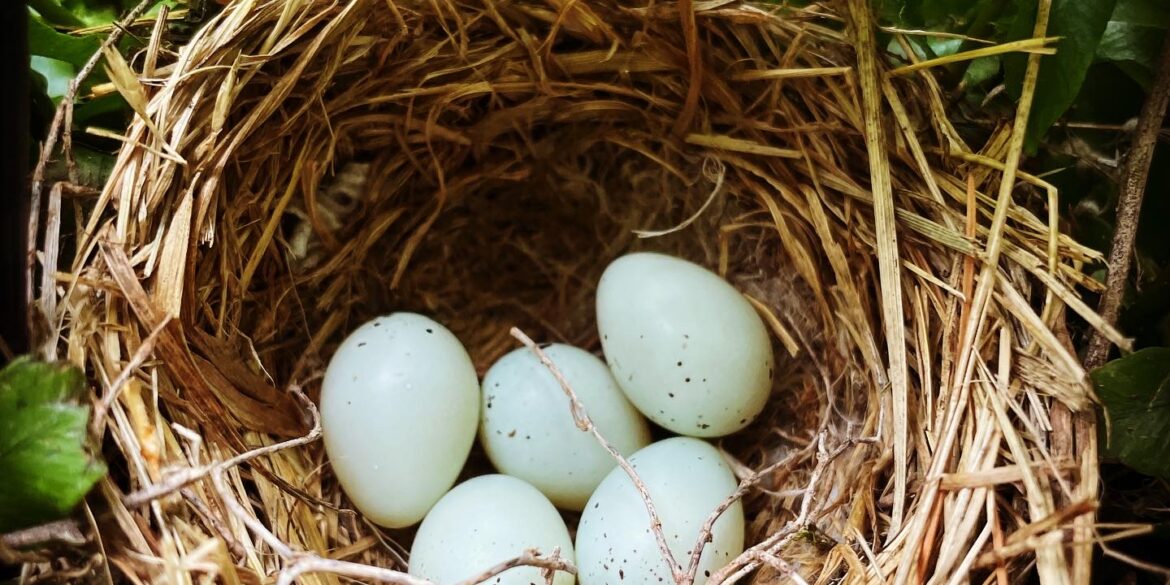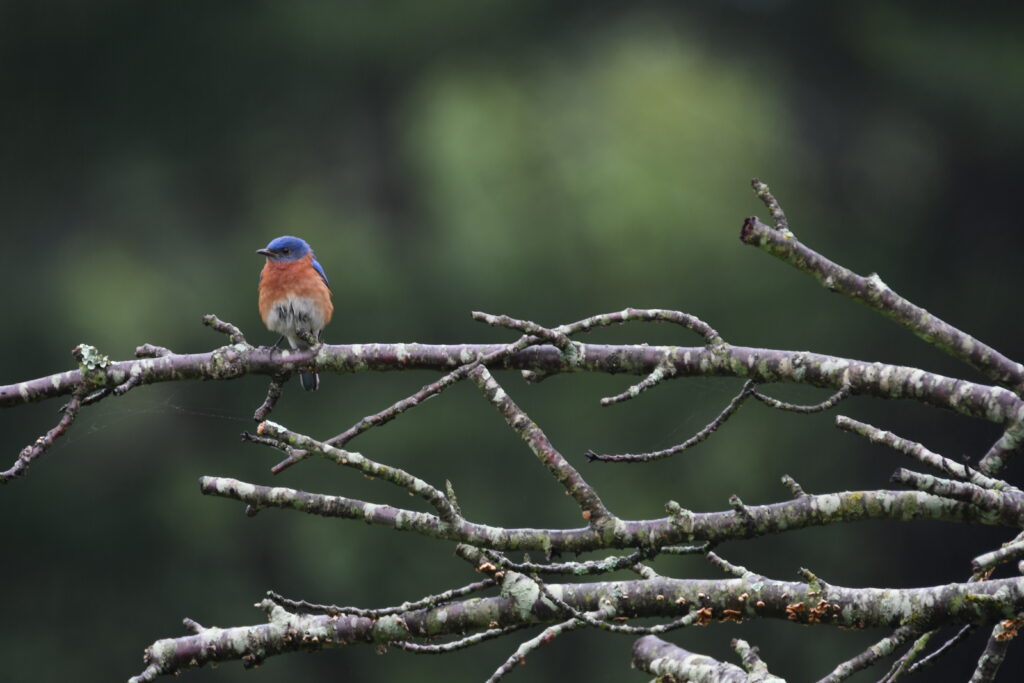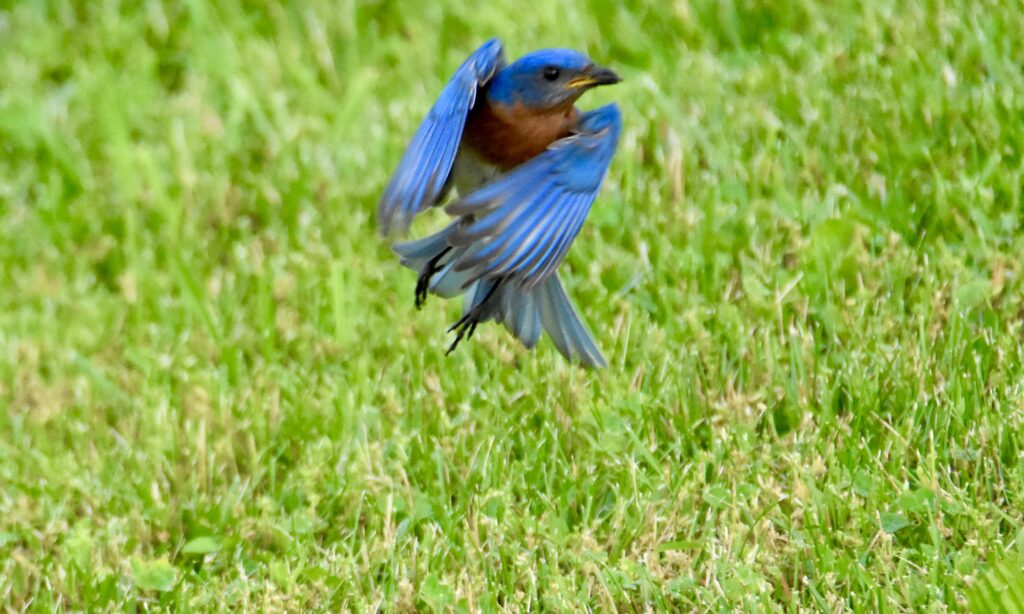For the Birds…
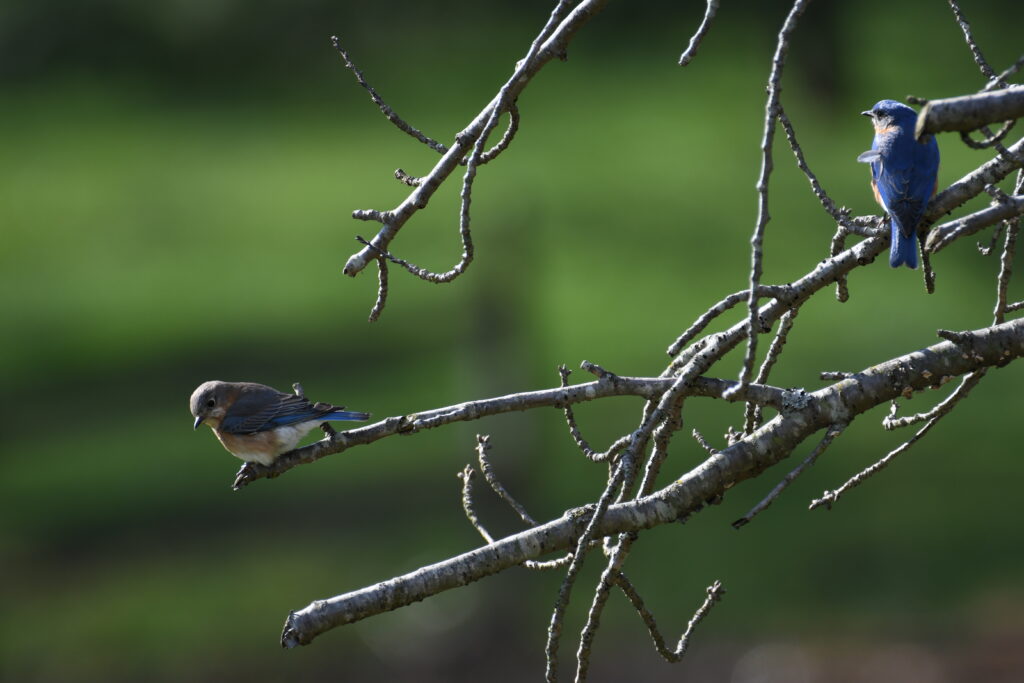
We have a dead tree in the middle of our backyard, a crabapple, which has zero leaves on it and drops dead branches daily, as if someone were trimming her hair. Everyday. Stray branches pile up underneath which our dog loves to run with and then drop all over the yard. Or gnaw on and eat chunks from. And then hubby has to get off the lawn mower every time he mows to pick up said branches. When he gets off the lawn mower, it shuts down. A wonderful safety feature, unless you are picking up branches strewn about the yard by your dog. I hear the lawn mower shutting down frequently when he mows.
I digress.
I have lived in two houses in Maryland, both containing dead trees, which you would think offer nothing – no leaves, no flowers, nothing beautiful to view.
Until you look closer and simply watch the tree.
Dead trees offer perches for birds to hunt insects and small rodents. Dead trees offer large amounts of space for woodpecker homes. Dead trees offer places for birds to crack seeds and nuts, to better grasp the moth trying to fly out of their grip, and to chat with their loved ones. Both dead trees at both houses were a virtual bird apartment building, the social center of activity.
On our dead crabapple, I have watched Goldfinches, American Robins, Eastern Bluebirds, House Finches, various species of sparrows, and hawks. The tree stands in the middle of our yard and offers a beautiful vantage from which to see our everything – the woods close-by, the back edge of our neighbor’s yard, our entire yard.
In January, I bought bluebird boxes in order to keep the bluebirds close. Eastern Bluebirds are one of my most favorite birds because their color…that blue…THAT BLUE!
Ah! Blue is supposed to invoke sadness, right? “I’ve got the blues…,” but when I see the blue of a male bluebird? I just smile. And then smile some more. And then stand and watch him as he looks for bugs and yummy food. And then I have to grab the binoculars and get a closer look at that blue because nothing in nature could make THAT blue color. And through the binoculars I am reminded, that yes, Ma Nature can and does make that blue and I smile some more.
I call him Mr. Blue. Hey, it’s easy. He’s been hanging around for awhile and I noticed this Spring he was joined by a lady friend. We call her Mrs. Blue.
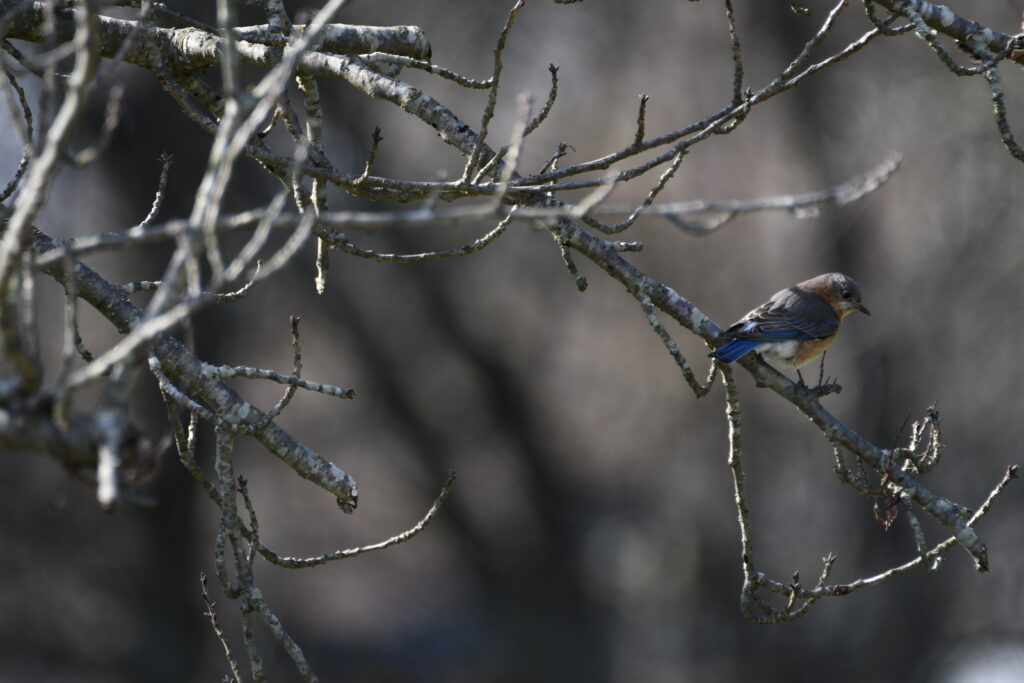
See how she’s not as brilliantly colored as him? That blue…just a hint shows through on her tail feathers but otherwise, her blue is less dramatic. Her splendor lies in her ability to lay eggs, sit on them, hatch them, feed them, and then push them out of the nest.
I have watched Mr. Blue inspect two out of the three bluebird houses we posted around the edge of our yard. He would land on top, take a look around, getting a good idea of the view. He’d then poke his head inside, checking out the layout of the house. I get it, Mr. Blue, I get it. Took us many house tours before we chose our current home.
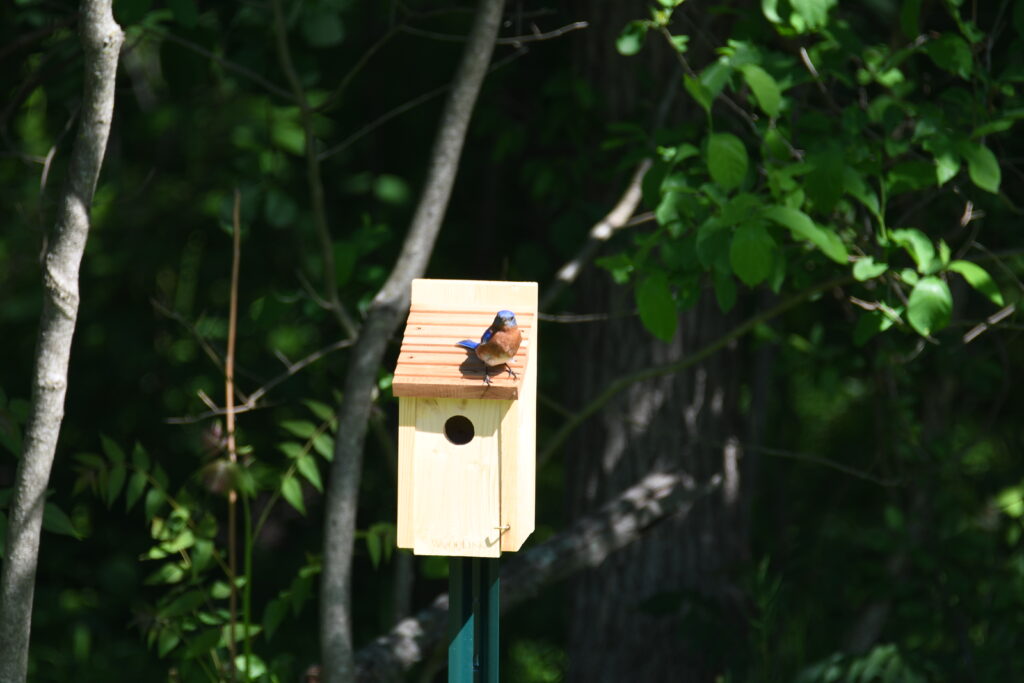
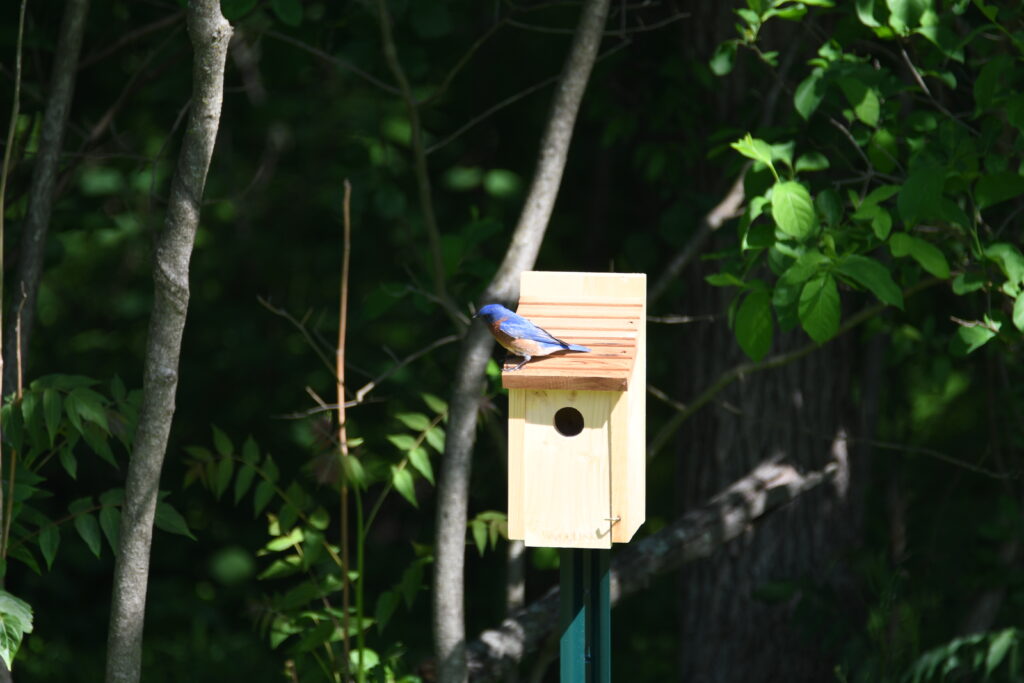
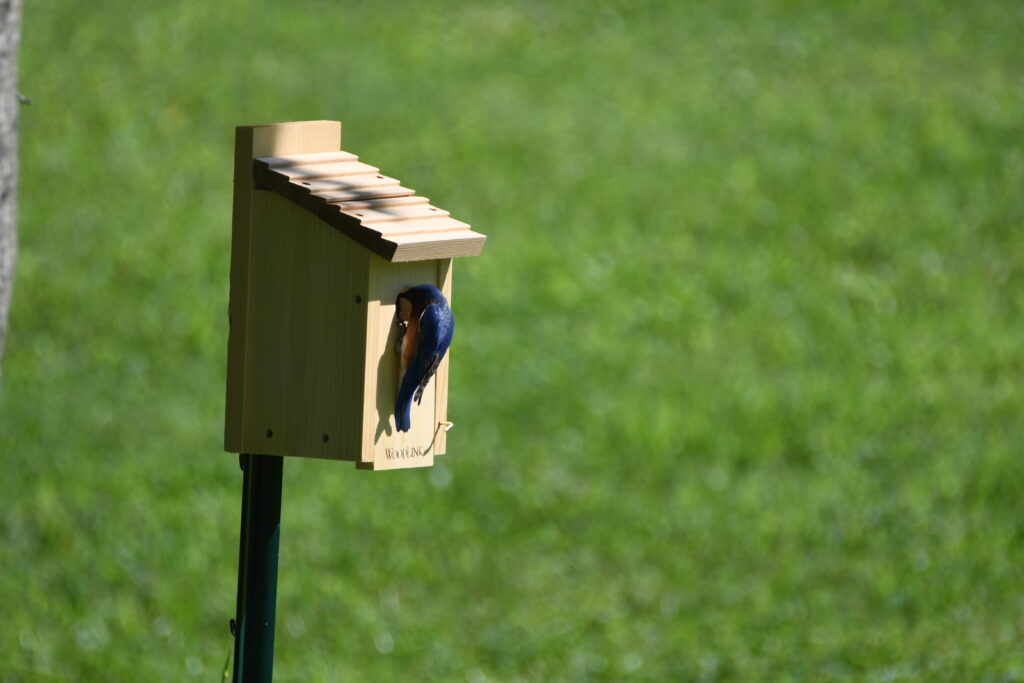
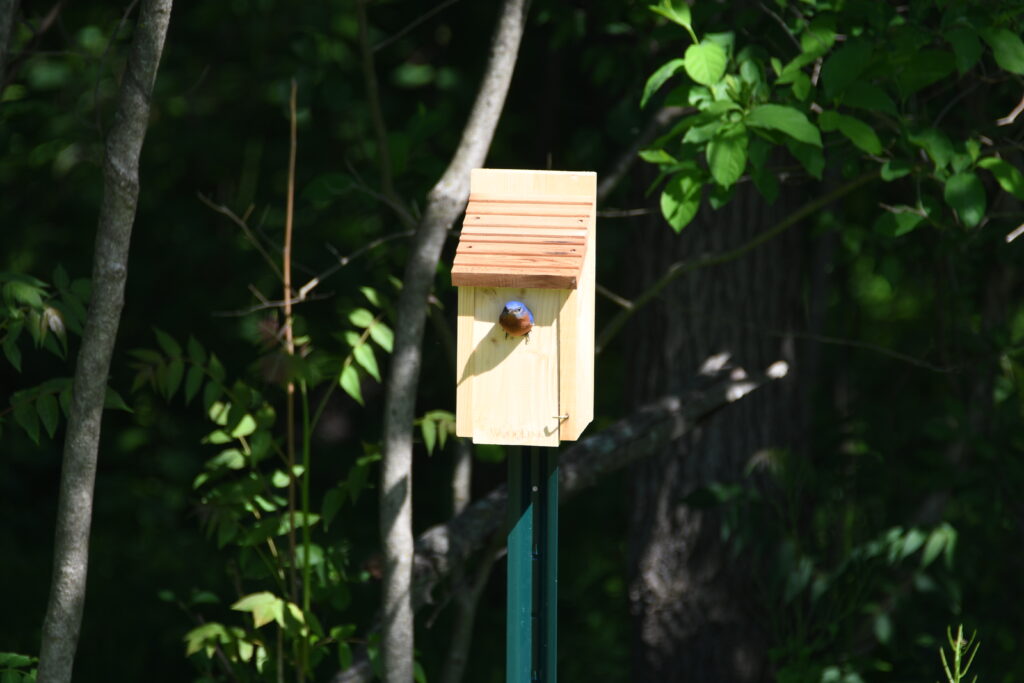
Eventually he decided on house #1 and has been busy moving in with Mrs. Blue ever since. I see them carrying bits of dried grass and twigs into the box and flitting between dead crabapple and their home. As I type this, he is sitting on his favorite perch, a lower branch on the dead crabapple, left side, facing south. From there I’ve watched him struggle with wiggling moths and larger bugs but he always gets them. Sometimes he even feeds them to Mrs. Blue who sometimes perches beside him.

I had never seen a bluebird until I moved to Maryland. My childhood home in Iowa was too neighborhood-y for bluebirds; they like edges of woods and cropland. “Edges” offer great vantage points to watch for predators and hunt for bugs. When we first moved into this home, I was captivated by the deer. Herds of them moving through our yard daily. And then in the Spring, I noticed a flash of blue. Could it be? Was it? YES!!! We had bluebirds! And I watched for them to see if their appearance was a One-Hit-Wonder or if they were here to stay. My enthusiasm was rewarded, they were here to stay.
And so this summer, we will watch for the first, second, and maybe third clutch of baby Blues to be born. According to georgiawildlife.com, it takes 13-20 days for bluebird eggs to hatch. I’m hoping for 2 clutches but we will see. Currently we have 11 house finch eggs, in nests, within the ferns hanging on our front porch. That I am a grandmama to a whole bunch of birds makes me BIG SMILE!
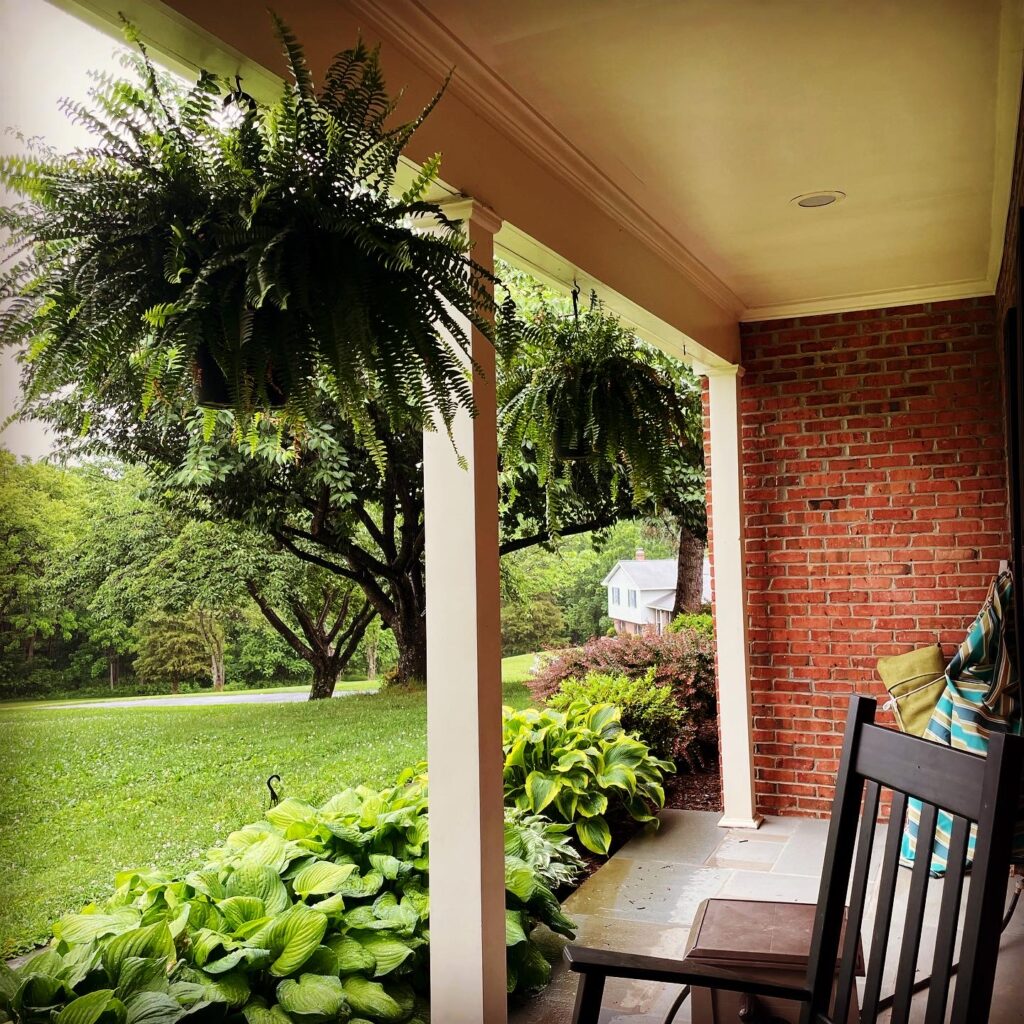
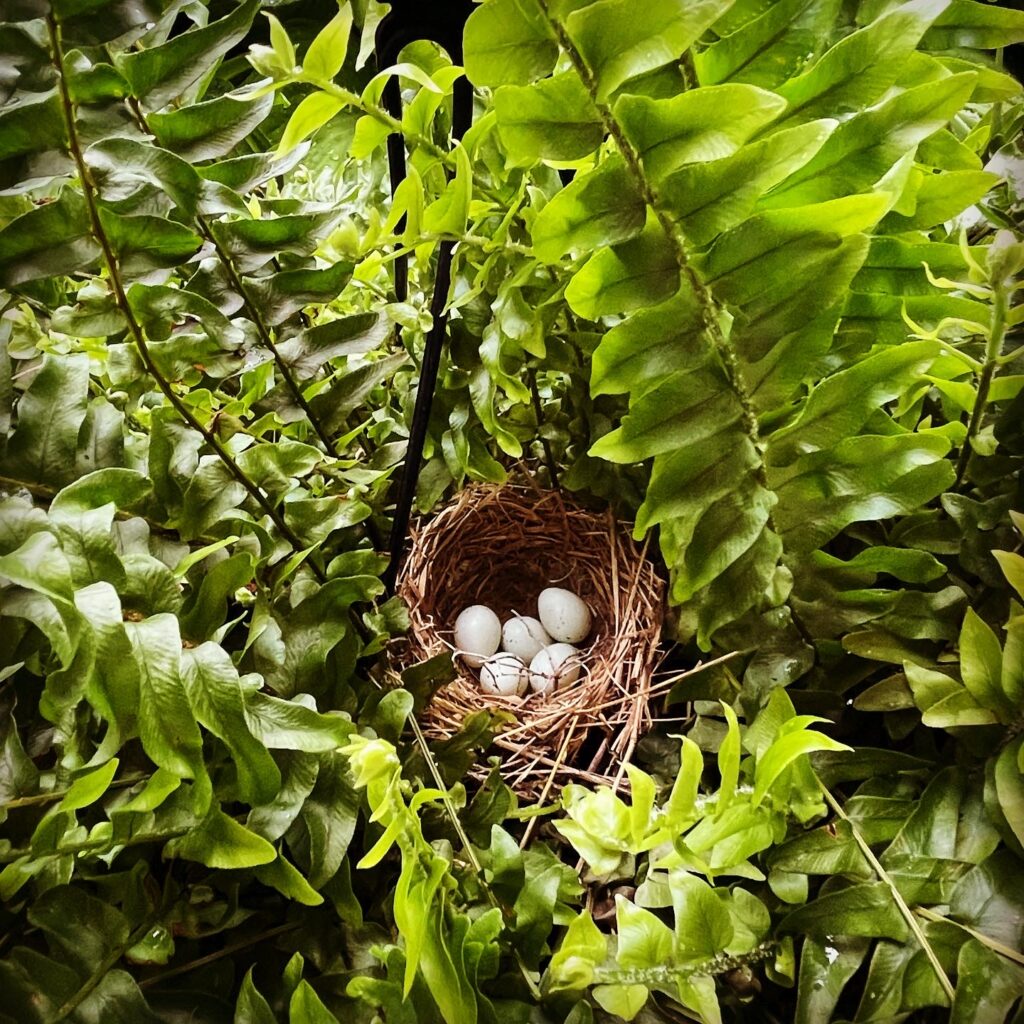
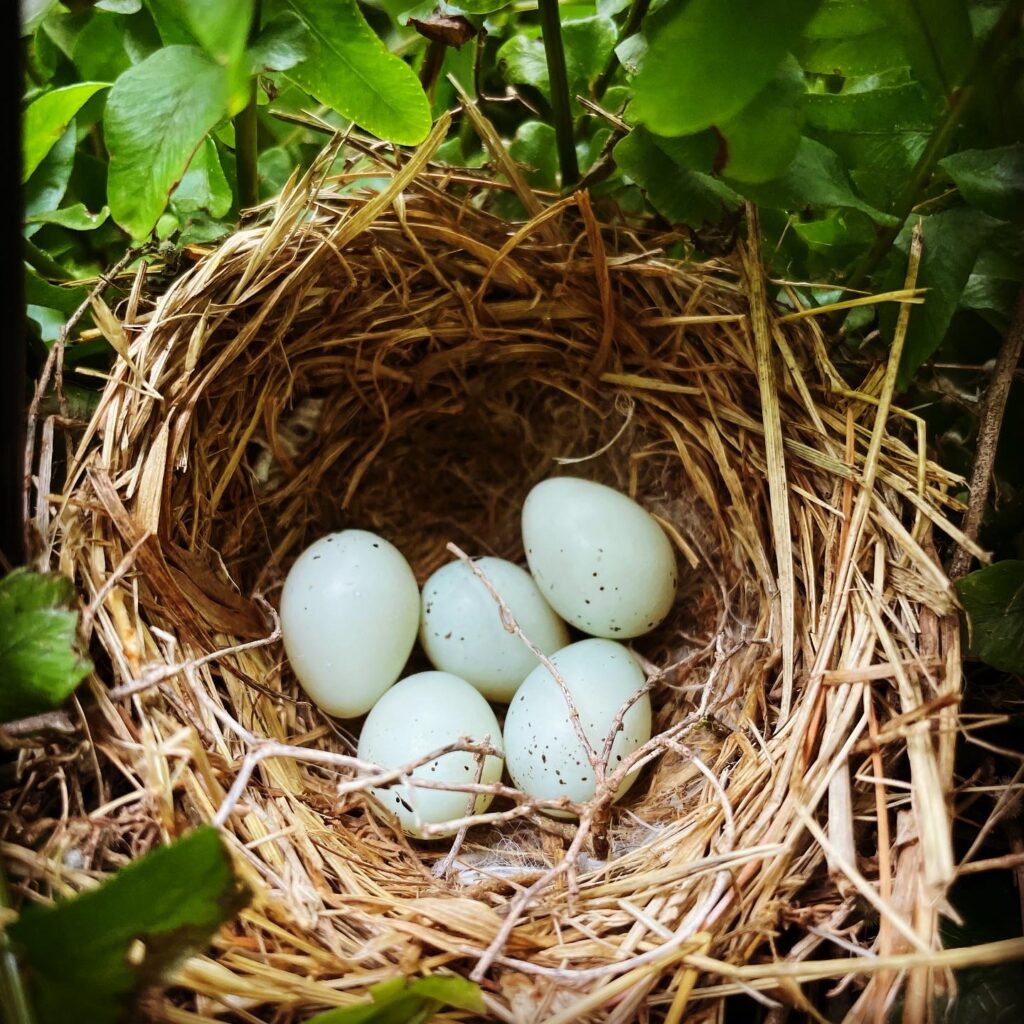
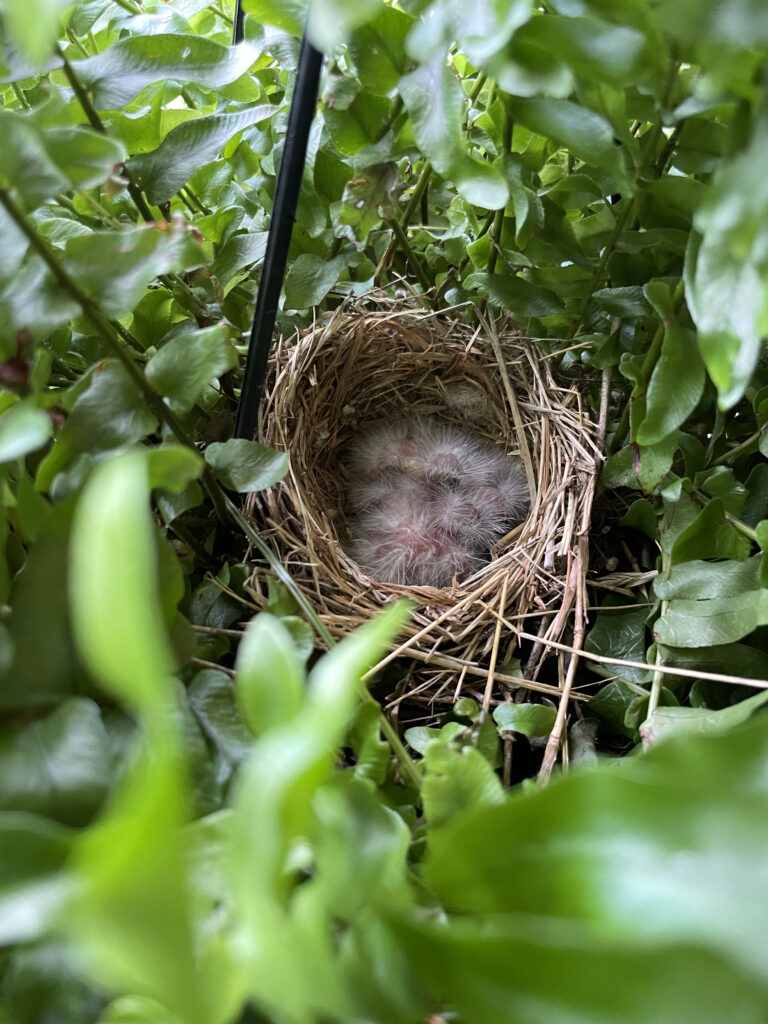
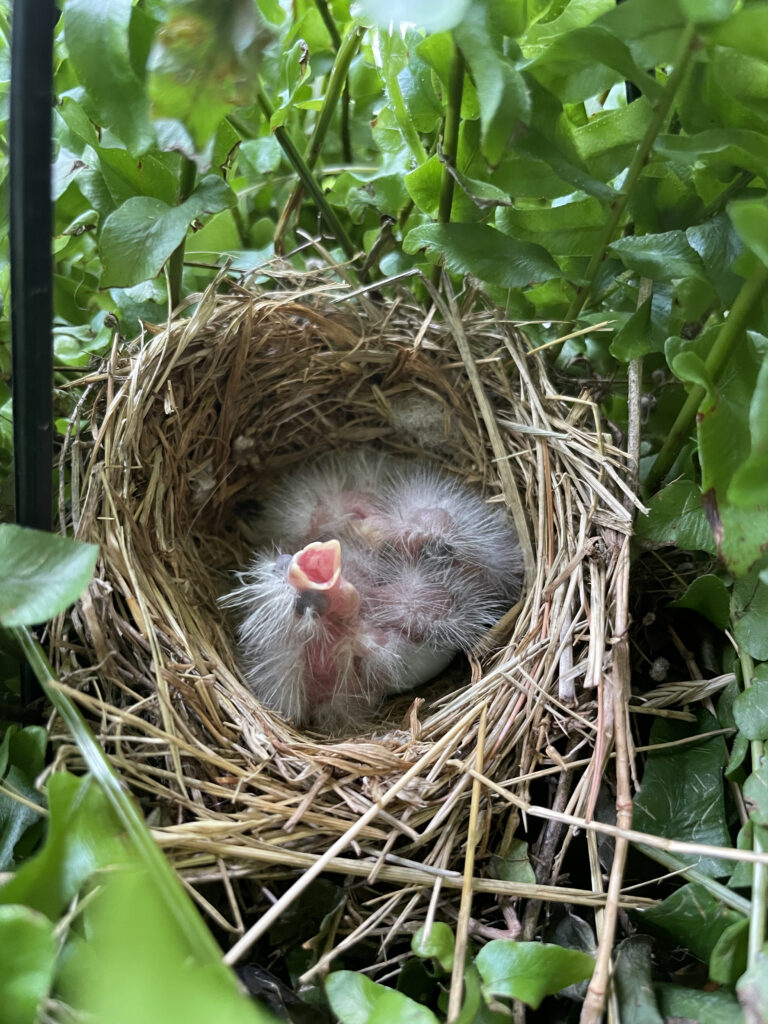
My dad would be so proud to see the birds at our feeders and the nests in our yard. He’d be the first one out with the binoculars, the first to feed them in the mornings, and the first to find the eggs. He and my Grandpa Dwren. Although Grandpa Dwren fed squirrels, so he’d be out there with ears of dried corn, dad would have the bags of seed, and I’d be soaking it all up just like I did when I was 4 and 8 and 15.
Eastern Bluebirds winter further south and mate for life so fingers crossed, we will have the return year after year. For the rest of summer, I’ll listen for the quiet chirps of the baby finches, continue to watch our bluebird houses for Mr. and Mrs. Blue and their broods, and hopefully convince my husband that the dead crabapple needs to stay, despite it’s lack of leaves and eternal shedding of branches.
